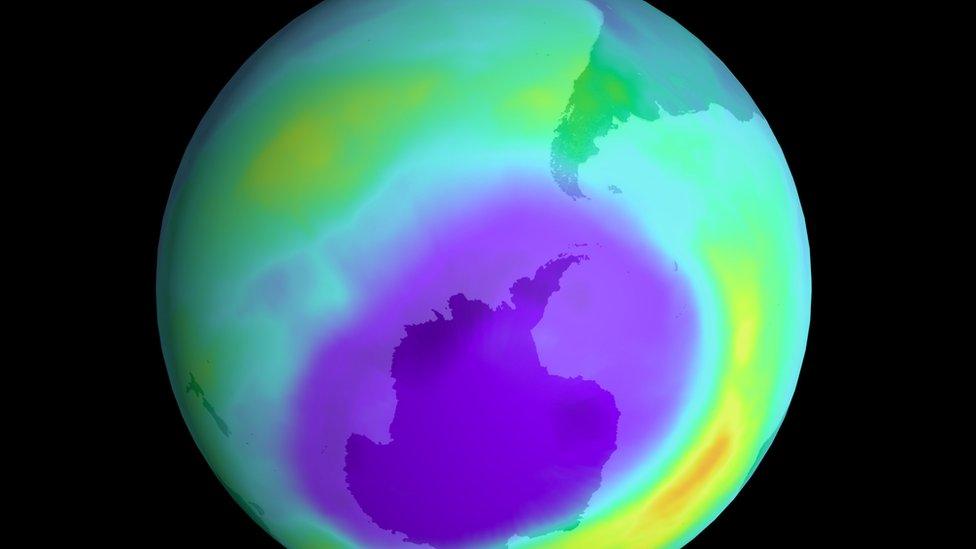Ozone layer hole over the Antarctic 'larger than usual' this year
- Published
- comments

This Nasa picture shows the ozone layer over Antarctica
Each year, as the Southern Hemisphere heads into spring, the ozone layer thins over the Antarctic, but scientists say that the hole is bigger than usual this year.
The researchers who monitor the ozone layer say the hole is as big as Antarctica and is now 'larger than 75% of ozone holes at that stage in the season since 1979.'
The ozone layer is the part of the Earth's upper atmosphere where ozone - a form of oxygen gas - is found.
It is important because it absorbs UV radiation, preventing most of it from reaching us on the ground.
UV radiation can harm humans, animals and plants, as well as damage plants' ability to absorb carbon - an important part of reducing the climate crisis.
Without the ozone layer our planet would be very different.
Vincent-Henri Peuch, Director of the Copernicus Atmosphere Monitoring Service - the group who monitor the ozone layer said: "This year, the ozone hole developed as expected at the start of the season.
"It seems pretty similar to last year's, which also wasn't really exceptional until early September, but then turned into one of the largest and longest-lasting ozone holes in our data record later in the season.
"Now our forecasts show that this year's hole has evolved into a rather larger than usual one."
The hole has appeared over Antarctica - the coldest and driest continent on Earth
Why is the ozone layer thinning?
In the 1970s scientists first discovered that there was a dramatic thinning of the ozone layer above Antarctica.
It was being destroyed by gases called CFCs that were found in things like hairsprays, fridges and air conditioning units.
An international agreement banned them in 1987 and CFCs are now banned in 198 countries around the world.
Can the ozone layer be fixed?
Since CFCs were banned there have been small signs of recovery.
In 2018, NASA found the first direct proof that the ozone layer was recovering. Their research showed that between then and 2005, ozone depletion was reduced by 20%.
However, it is thought that it will take until at least 2060 for the effect of the substances to be phased out completely.
- Published8 October 2018
- Published3 March 2020
- Published17 July 2019
